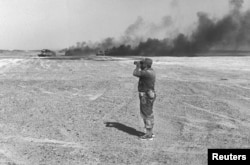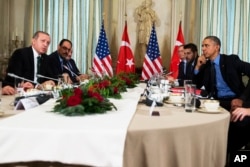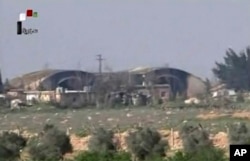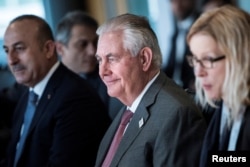September 1944: The United States recognizes Syria as an independent state in exchange for Syria’s full recognition and protection of the existing rights of the U.S. and its nationals.
November 1944: The U.S. establishes diplomatic relations with Syria.
February 1958: U.S.-Syrian diplomatic relations end after Syria and Egypt form a new state, the United Arab Republic. UAR’s capital is Cairo, where the U.S. maintains an embassy.
October 1961: U.S.-Syrian diplomatic relations are re-established following Syria’s withdrawal from the UAR in September.
June 1967: Syria cuts diplomatic ties with the U.S. after the start of the Arab-Israeli War.
February 1974: A U.S. Interests Section — a limited diplomatic post — is established in Syria, in the Italian embassy.
June 1974: U.S.-Syrian diplomatic relations are restored, and the U.S. embassy in the capital of Damascus is re-established.
August 1990: Syria joins U.S.-led coalition against Iraq after Iraq invades Kuwait.
May 2002: Syria is added to a U.S. list of “axis of evil” states introduced by U.S. President George W. Bush in January. Then-undersecretary of state John Bolton says Syria is acquiring weapons of mass destruction.
May 2004: The U.S. places sanctions on Syria for that country’s presumed support of terrorism and its failure to stop extremists from entering Iraq.
February-April 2005: U.S.-Syrian tensions heighten after Lebanese Prime Minister Rafic Hariri is assassinated in a February explosion in Beirut.
April 2007: U.S. Congresswoman Nancy Pelosi, then-speaker of the House of Representatives, meets in Damascus with Syrian President Bashar al-Assad.
March 2009: Then-acting assistant U.S. Secretary of State Jeffrey Feltman and White House national security aide Daniel Shapiro visit Damascus on a diplomatic mission, the first high-level mission in nearly four years.
May 2010: The U.S. renews sanctions against Syria on claims it supports terrorists, seeks weapons of mass destruction, and violated United Nations resolutions by providing Scud missiles to the militant group, Hezbollah.
May 2011: The U.S. and the European Union tighten sanctions on Syria in response to Syria’s military efforts to suppress anti-regime protests.
August 2012: U.S. President Barack Obama warns Syria that the use of chemical weapons would move the U.S. closer to intervention.
December 2012: The U.S. joins Britain, France, Turkey and the Persian Gulf states in formally recognizing the opposition National Coalition as a representative of the Syrian people.
December 2013: The U.S. and Britain suspend non-lethal support for rebels in northern Syria after the Islamic State reportedly seized bases of the Western-supported Free Syrian Army.
September 2014: The U.S. and five Arab nations carry out aerial assaults against Islamic State near Aleppo and Raqqa.
April 2017: U.S. President Donald Trump orders a missile attack on an airbase from which Syrian government planes allegedly carried out a chemical weapons strike on the rebel-controlled town of Khan Sheikhoun.
May 2017: The U.S. provides weapons to the YPG Kurdish Popular Protection Units, which along with the main opposition Syrian Democratic Forces, captures the strategically important town of Tabqa from Islamic State.
June 2017: The U.S. shoots down a Syrian warplane near Raqqa after it allegedly bombed an area near the U.S.-supported Syrian Democratic Forces.
July 2017: U.S. officials confirm Trump has ended the clandestine U.S. program to provide arms and supplies to Syrian rebel groups.
September 2017: U.S. bans nearly all travel from seven countries — Syria, Iran, Libya, Yemen Somalia, Chad and North Korea.
October 2017: U.S. forces say the IS “capital” of Raqqa is captured.
December 2017: The Pentagon announces nearly 2,000 troops are fighting in Syria, about four times the total previously disclosed. The increase includes service members who are on temporary duty of six months or less.
January 2018: U.S. Secretary of State Rex Tillerson says U.S. troops will stay in Syria long after the fight with ISIS is over. The U.S. also accuses Syria of using chlorine bombs on its people.
February 2018: U.S. forces say they repelled an attack by Assad’s forces in a rare confrontation between the two groups.
March 2018: Trump orders the State Department to suspend more than $200 million in funds for recovery efforts in Syria while the administration reassesses its role in the conflict.
April 2018: Trump contemplates complete withdrawal from Syria within months. Later promises “big price” in retaliation for Assad’s suspected chemical attack on the Syrian people.














